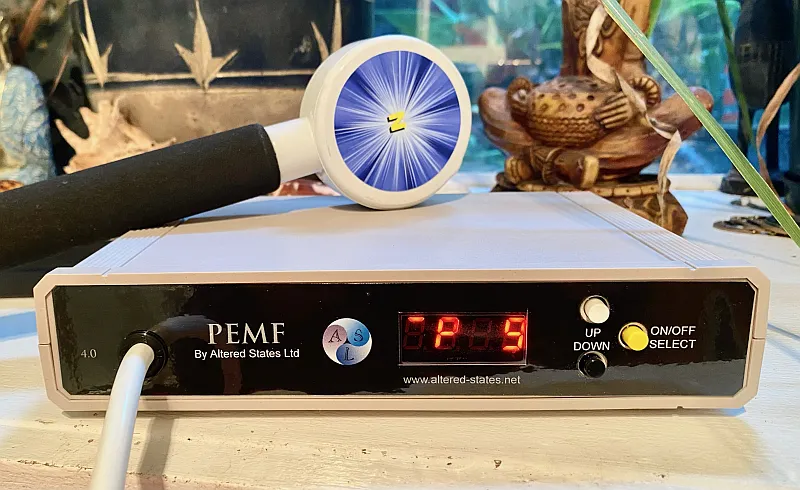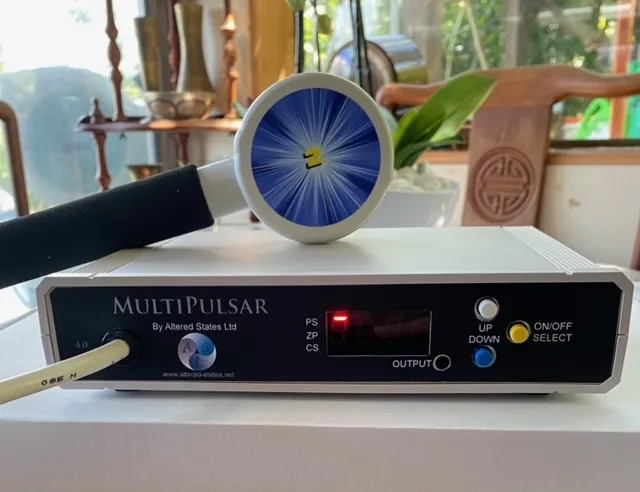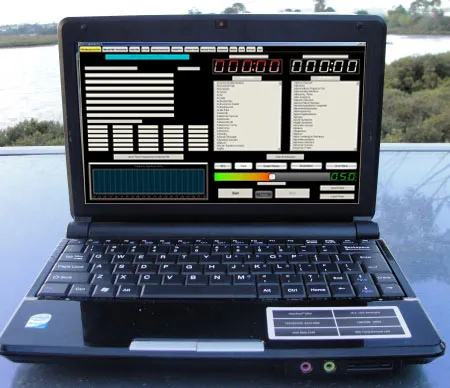UNDERSTANDING MAGNETIC THERAPY FOR DOGS By Shawn Messonnier, DVM In recent years, therapy for dogs using magnets has gained a large following among some pet owners. It is seen as a safe and simple method of treating various disorders, often producing positive results without side effects or much expense. This type of treatment is often used in conjunction or to replace other therapies include traditional medications, surgery, and of course complementary therapies such as acupuncture and herbs. You might ask, does this treatment method really work, and if so, can my dog benefit from magnetic field therapy? At first glance magnetic therapy might seem a bit strange or new age, but it is by no means ‘quackish’. Keep in mind that the Earth has a normal magnetic field and the cells in our bodies also have a normal magnetic field that allows for proper functioning. In numerous NASA experiments it was determined that rats in space that were not provided with a suitable magnetic field perish due to a disrupted energy flow. NASA scientists have also noted that astronaut’s experience similar calcium deficiencies after long-term space flights. Some doctors attribute many illnesses to the decline over the centuries in the Earths normal magnetic field. So how does magnetic therapy work? It is generally believed that magnets work by means of magnetic lines of force; units called gauss measure the strength of the magnetic field. The higher the gauss number the stronger the magnet (a 1000 gauss magnet is ten times stronger than a 100 gauss magnet) Magnets can be used either as permanent magnets, also called static magnets or as pulsed electromagnetic field magnets (PEMF). Static magnets come in bars, beads, or strips. These are somewhat similar to the magnets on your refrigerator. PEMF use a pulsing current that flows through a wire coil to create a magnetic field around the wire: the greater the amount of current flow, and the greater the number of turns of the wire, the greater the magnetic field that forms. In people the Food and Drug Administration approve PEMF for treating various types of non-union fractures (fractures that have failed to heal). Other uses include treatment of hip disorders, osteoarthritis, and rotator cuff injuries. Even more promising news is that no toxic effects have been reported using magnetic therapy. Magnets appear to heal the body removing inflammation and restoring circulation. By increasing blood flow to a diseased site on the body, increased nutrients become available to speed the healing process. In fracture healing, for example, the use of magnetic fields increases the adherence of calcium ions to the blood clot formed at the site of the break. This allows for the proper formation of the callus that is necessary for fractures to heal properly. In the eastern view of healing, magnets help restore the energy flow of the body to allow healing and proper metabolism. This is similar to one of the theories used to explain the positive affects of acupuncture as well. In canine medicine, magnets are often used to aid in fracture healing and in the treatment of many other ailments including arthritis, hip dysplasia, osteochondritis, epilepsy, pain relief, chronic organ disorders and vertebral disorders. Sprains and strains and other traumatic disorders may also benefit from magnetic therapy. Magnets should not be used in acute infectious conditions, on cancerous growths (although some doctors do find them useful in treating cancerous tumours), in acute injuries, pregnant animals, or in dogs with cardiac pacemakers. Dr. Strazza, a well-regarded expert in the area of magnetic therapy has commented on his experiences treating animals using magnetic therapy. He stated that with regard to fracture healing, he found a reduction of 40-50% in the healing time of simple fractures by merely incorporating magnets into a bandage. This meant that dogs could resume weight-bearing sooner if the magnets were used along with conventional fracture repair methods. A problem often seen in fracture healing is non-union of the fracture. In a non-union, the ends of the fracture fail to heal and the ends of the bones remain. He also observed that in magnetic therapy treatment of over fifty different animal fracture cases, no cases of non-union developed. In two specific cases of severe non-union referred for evaluation where the fracture had failed to heal, magnetic therapy allowed healing of the fracture sight. Dr. Strazza also reports good remarkable success in treating various types of arthritis with magnets. Included in the cases are dogs with spinal arthritis and paralysis, chronic disk disease, hip dysplasia and arthritis, older dogs that move stiffly or slowly, and stiffness that develops after a morning exercise routine. By using a combination of a magnetic mat for sleeping along with a spinning magnetic field, he has achieved positive responses in 60-70% of his cases. Magnets are certainly not a cure- all for every medical problem. Still they are a safe and relatively inexpensive alternative for pets with the chronic problems and can be of benefit in healing fractures. Magnetic field therapy helps the body to heal by creating a favorable environment for repair. Magnets increase blood flow to the area, bring in essential nutrients, and help relieve pain and inflammation. As with so many facets of the complementary and alternative medicine market, dog owners should always consult with an experienced veterinarian before trying magnetic field therapy. This should always be done to determine an accurate diagnosis of your dog’s condition and in order to select the best possible treatment.
MFT in Veterinary Medicine - a Contribution by Klaus Voshegge The veterinarion Dr Prodinger reports on his experiences with MFT http://www.magnetic-field.info/1433420.htm
|





